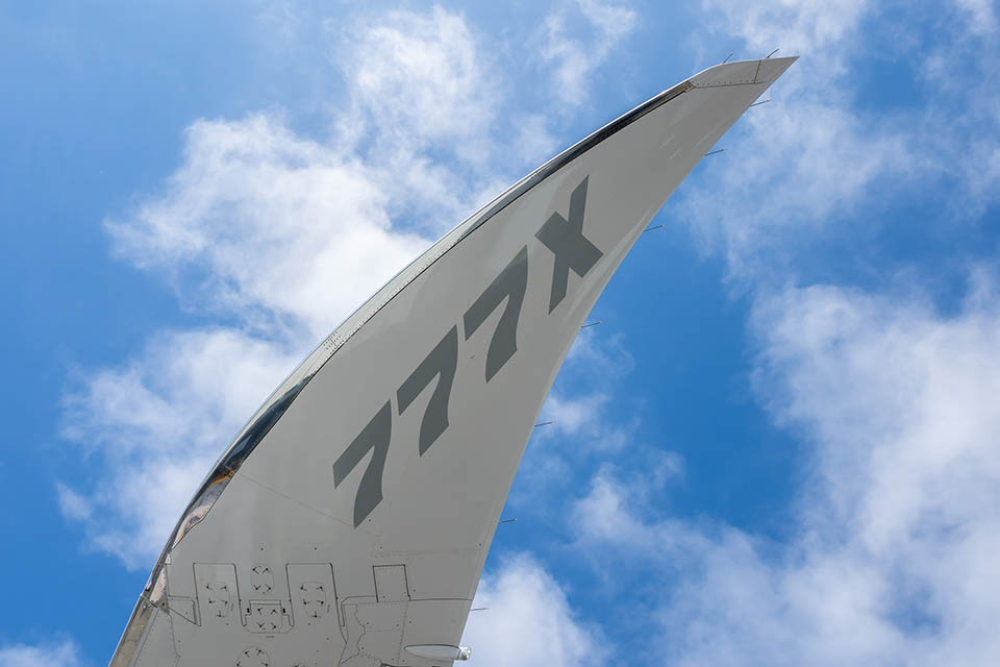Summary
- Boeing 777X: an upgraded successor to the 777-300ER.
- 777X features a new innovative wing design for greater lift.
- GE9X engines enhance fuel efficiency by up to 15% compared to GE90.
The Boeing 777 family of aircraft is one of the most successful widebody aircraft. Over 60 operators have placed orders for over 2,250 777s across all variants. Among the five original variants, the Boeing 777-300ER is the most popular among airlines, with more than 832 units built and delivered by Boeing.
Boeing launched the iconic jet’s national successor, the Boeing 777X, in 2013, with plans for its entry into service in 2019. While the 777X has not entered service yet, 2024 marks 30 years since the first Boeing 777 (-200) took to the skies. There will be some differences when the 777X enters service. This article explores the differences in design and operational capabilities between the two widebody jets.
A natural successor to the 777-300ER
|
Boeing 777-200LR (Long Range) |
Boeing 777-300ER (Extended Range) |
|
|---|---|---|
|
Seats (2-class) |
317 |
392 |
|
Range nm (km) |
8,555 NM (15,843 km) |
7,370 NM (13649 km) |
|
Length |
63.7 m (209 ft 1 in) |
73.9 m (242 ft 4 in) |
|
Wingspan |
64.8 m (212 ft 7 in) |
64.8 m (212 ft 7 in) |
|
Height |
18.6 m (61 ft 1 in) |
18.5 m (60 ft 8 in) |
|
Engine |
GE90-115BL |
GE90-115BL |
Boeing’s 777-300ER made its first test flight in early 2003 and entered into service with Air France one year later. Over 850 of the aircraft have been sold, and it remains in production. The 777-300ER could fly about 20% further than the 777-300, explaining its ER (extended-range) tag.
The 777-300ER is just under 74 meters long and has a wingspan just shy of 65 meters. It can carry between 365 and 550 passengers (depending on cabin configuration) up to 13,649 kilometers before needing to refuel. The plane has proved a big hit with airline customers needing a long-haul aircraft between the smaller 787 Dreamliner and the larger and now-defunct 747 jumbo.

Related
Emirates CEO Warns Boeing Could Delay 777X Deliveries To 2026
This would mean that Boeing would deliver the first 777X six years after the initially planned delivery date.
However, the technology and design behind the 777-300ER are almost two decades old. There are two variants of the 777X available right now. Size-wise, there’s not a lot of difference between the 777X and the 777-300ER. The 777-8 is slightly smaller than the 777-300ER, and the 777-9 is slightly bigger. The main differences are in the design, technologies, and efficiencies. They are not things many passengers will necessarily note, but it’s something the airlines will.
The smaller of the 777Xs, the 777-8 is just under 70 meters long. In a modern two-class configuration, it can seat around 385 passengers. The plane has a range of 16,000 plus kilometers. The larger of the 777X, the 777-9 is nearly 77 meters long. Boeing says it can seat around 425 passengers across two cabin classes. Its range is around 13,500 kilometers, similar to the 777-300ER.
Photo: Boeing
The innovative new 777X wing
|
Boeing 777-8 |
Boeing 777-9 |
|
|---|---|---|
|
Seats (Typical 2-class) |
395 |
426 |
|
Range |
Up to 8,745 NM (16,190 km) |
7,285 NM (13,500 km) |
|
Length |
232 feet, 6 inches (70.86 m) |
251 feet, 9 inches (76.72 m) |
|
Wingspan |
Extended: 235 feet, 5 in (71.75 m) On ground: 212 feet, 9 inches (64.85 m) |
|
|
Cabin |
Spacious and comfortable, 16 in. wider than the competition; new customizable architecture; and comfort innovations from the 787 Dreamliner |
|
|
Configuration |
Twin-aisle (widebody) |
|
|
Engine |
GE9X, supplied by GE Aviation |
|
The first big difference between the 777X and the 777-300ER is the wingspan. Both 777X variants have a wingspan of 71.8 meters, roughly 15% bigger than the 777-300ER’s wingspan.
Because the wingspan is so huge, the wings’ actual ends must fold upwards to allow the plane to use normal gates. This new wing design needed FAA approval as it is technically a new airplane class. However, these innovative wings will give the 777X greater lift and less drag.
Photo: Vidit Luthra | Shutterstock
This helps make 777X more fuel-efficient than the previous generation 777-300ER. Depending on who you ask, the 777X is 10-15% more fuel-efficient than the 777-300ER. That percentage may not sound like a lot, but every dollar counts in the cutthroat airline industry.
While the fuselage materials aren’t that different from the standard 777-300ER, the wings are almost completely made of composite materials not necessarily available two decades ago.
Photo: Boeing
Enormous new engines cut costs, emissions, and noise
The 777X engines are also worth noting. Boeing is using a GE9X engine with a 132″ fan. Despite several problems getting the engines into service, the FAA has recently signed off on them. The GE9X engines will be the largest and most powerful commercial aircraft engines built to date.
In addition, GE says that the 777X engines are the quietest they have ever built, falling within 8 dB of Stage 5 aircraft noise standards. Compared to earlier versions of the 777, emissions will be cut by nearly 30%. Overall, these engines will consume significantly less fuel than the older GE90 engines used on 777-300ERs. The 777X engines will also be much quieter.

Related
GE90 vs GE9X: Which Boeing 777 Engine Type Is Most Powerful?
Despite being larger and more capable, the GE9X is rated at a lower thrust than its predecessor, GE90.
Pilots will notice better technologies in the cockpit, such as turbulence detectors and improved autopilot systems. For passengers, the big differences will be larger windows, a wider cabin, new lighting, and new cabin architecture.
While the 777-300ER has many fans among airlines and passengers, nothing lasts forever. The 777X is its natural successor. The 777X has had a troubled start, but Boeing is making inroads with its test flights this year. In a few years, we should see the 777X touch down at airports worldwide. It will be interesting to see how popular the plane is with passengers.
What do you think of the 777X compared to older aircraft versions? Post your views in the comments section.




